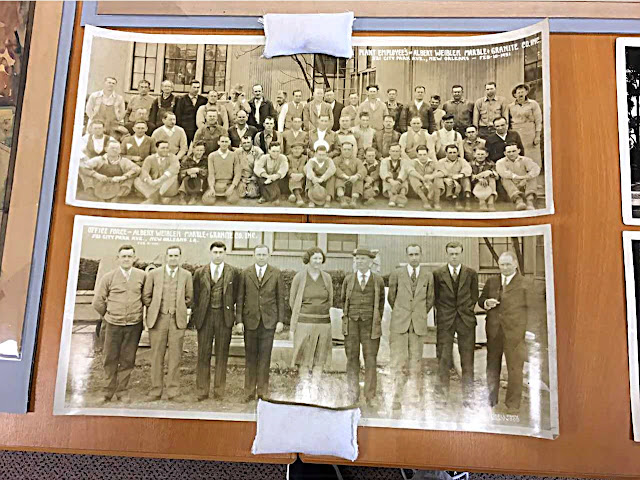 |
| Bronze relief tomb decoration from Albert Weiblen Marble & Granite Co. 1910s. |
We also brought out other items from our Weiblen records, including bronze tomb reliefs, plaster models, which were used to give potential clients an idea of scale and design, photographs, art glass samples, and an enameled metal sign used to identify newly constructed Weiblen tombs from the 1920s.
The four watercolor drawings were presented to client Joseph Vaccaro, but apparently rejected by him, as the photos of the as-built tomb show a different design. Drawings for the built design were not included with the company's records when they were given to Tulane by Stewart Enterprises, Inc., who purchased the Weiblen company and its office contents in 1969. Joseph Vaccaro, along with his brothers Luca and Felix, and Salvatore D'Antoni, formed the Standard Fruit and Steamship Company in New Orleans in the early part of the 20th century. The company eventually became Dole Fruit.
 |
| Top: Weiblen stone cutters and plant employees, 1931. Bottom: Weiblen office staff, including John Weiblen, son of Albert, 4th from left, 1931. |










I'm the great nephew of Norma Merritt Weiblen who was married to John Weiblen and took over Weiblen Marble Company after John's death in the 1950s. I have some photos and personal effects which might be of interest in placing with Weiblen archival conservation. Please let me know if there is an interest.
ReplyDelete